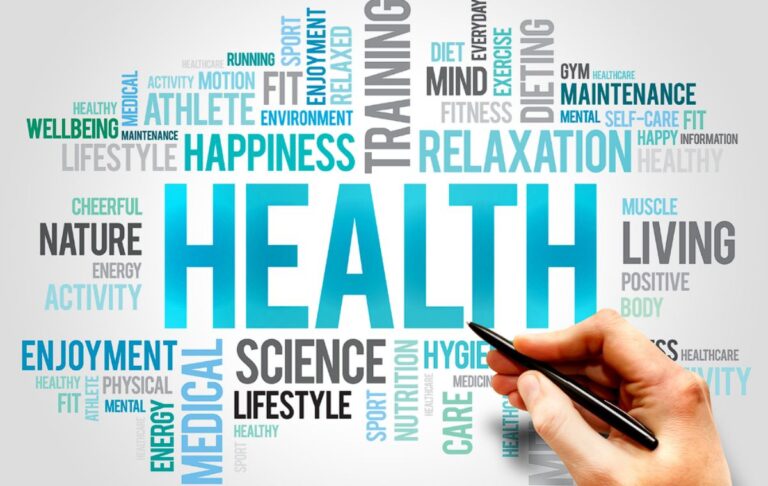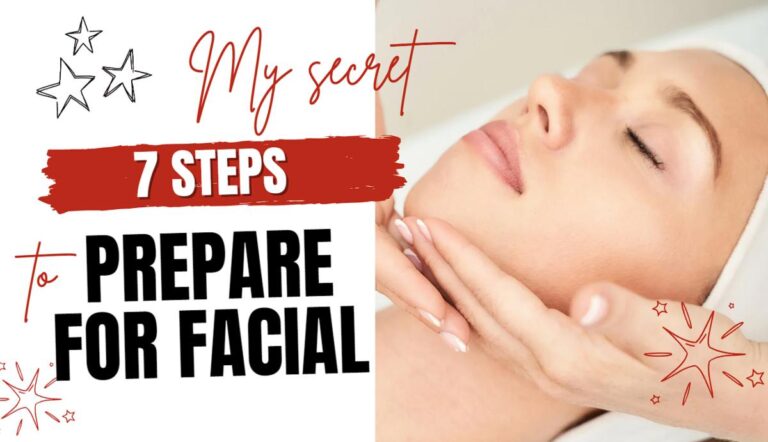Full Body Workout at Home Without Equipment for Beginners
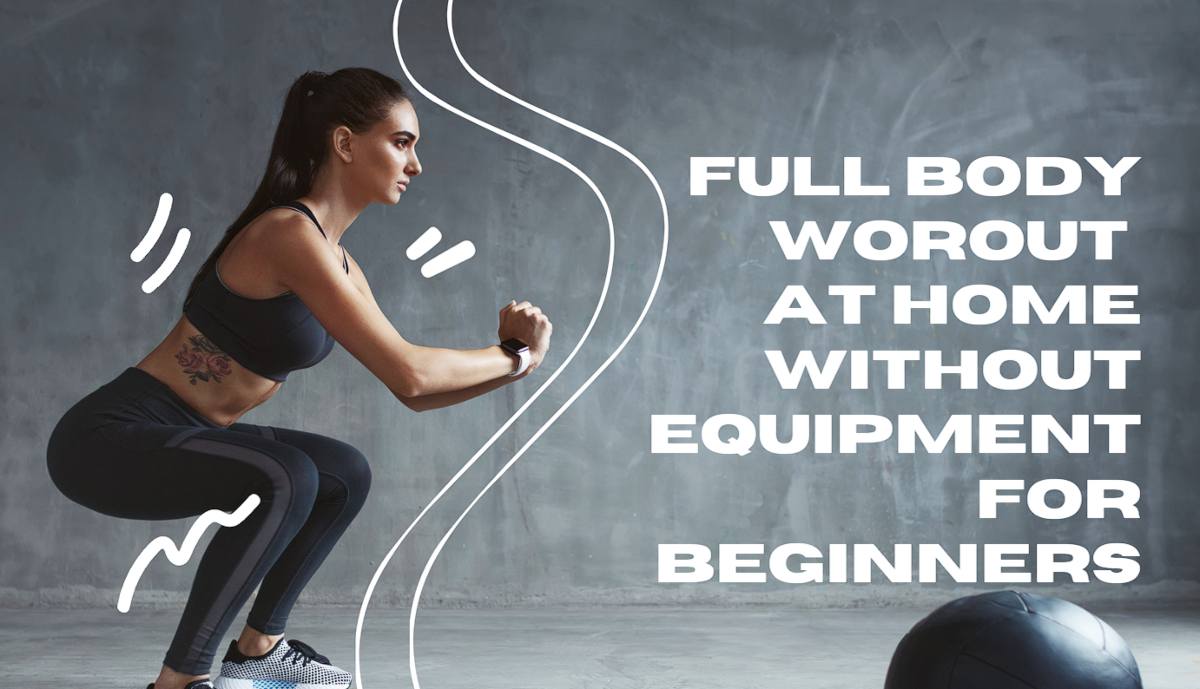
Introduction
Full Body Workout at Home Without Equipment for Beginners: Embarking on a full-body workout routine from the comfort of your home is an empowering step towards better health, especially for beginners. The beauty of these workouts lies in their simplicity—no expensive gym memberships or fancy equipment is required. You can use your own body weight to build strength, improve flexibility, and enhance overall fitness.
Full-body workouts are particularly beneficial because they target multiple muscle groups simultaneously, leading to more efficient workouts that maximize results. Whether you’re looking to shed some pounds, tone your muscles, or simply boost your energy levels, a well-structured full-body workout routine can help you achieve your goals. This article will guide you through the process of setting up a beginner-friendly workout plan that you can easily do at home.
Working out at home offers unmatched convenience. You have the freedom to exercise whenever you want, without the hassle of commuting to a gym or waiting for equipment. Additionally, home workouts eliminate the intimidation factor that many beginners feel in a gym setting. You can focus entirely on your fitness journey, progressing at your own pace.
This article will provide you with a comprehensive guide to effective full-body exercises that require no equipment, making it easier than ever to get started on your fitness journey. Whether you’re new to working out or returning after a break, these exercises will help you build a strong foundation for long-term fitness success. [Full Body Workout at Home Without Equipment for Beginners]
Table of Contents
Getting Started
Before diving into your workout routine, it’s crucial to set clear and realistic fitness goals. Whether you want to lose weight, build muscle, or simply improve your overall health, having a defined goal will keep you motivated and focused. Begin by reflecting on your goals and understanding the reasons behind them.
Are you working out to improve your cardiovascular health, or are you aiming to increase your strength and endurance? Setting specific, measurable goals—such as aiming to work out three times a week or to complete a certain number of push-ups—will help you track your progress and stay committed to your routine.
The cornerstone of any effective workout plan is consistency. As a beginner, it’s important to establish a routine that you can stick to over time. Aim to work out at least three times a week to start seeing results, and gradually increase the frequency as you build stamina and strength. Remember, it’s not about how hard you work out in one session, but about maintaining regular, sustained effort. Equally important is understanding the role of recovery.
Giving your body time to rest between workouts is essential for muscle growth and injury prevention. So, as you plan your routine, make sure to include rest days to allow your body to recover and rebuild. [Full Body Workout at Home Without Equipment for Beginners]
Warm-Up Routine
A proper warm-up is an essential component of any workout, especially for beginners. It prepares your muscles, joints, and cardiovascular system for the physical activity ahead, reducing the risk of injury and improving overall performance. A good warm-up increases your heart rate gradually, enhances blood flow to the muscles, and loosens up your joints, making your body more flexible and responsive.
Skipping the warm-up can lead to muscle strains or other injuries, particularly when engaging in exercises that involve sudden or intense movements. Therefore, dedicating at least 5-10 minutes to warming up before your workout is crucial.
Start your warm-up with gentle stretching exercises that target all major muscle groups. Focus on areas that will be heavily used in your workout, such as the legs, arms, and back. Follow this with dynamic movements like arm circles, leg swings, and walking lunges, which not only increase your range of motion but also help activate the muscles you’ll be working on.
These movements help to gradually elevate your heart rate and get your blood flowing to the muscles, ensuring they are ready for the workout. By the end of your warm-up, your body should feel warm, your heart rate slightly elevated, and you should be mentally prepared to tackle your workout. [Full Body Workout at Home Without Equipment for Beginners]
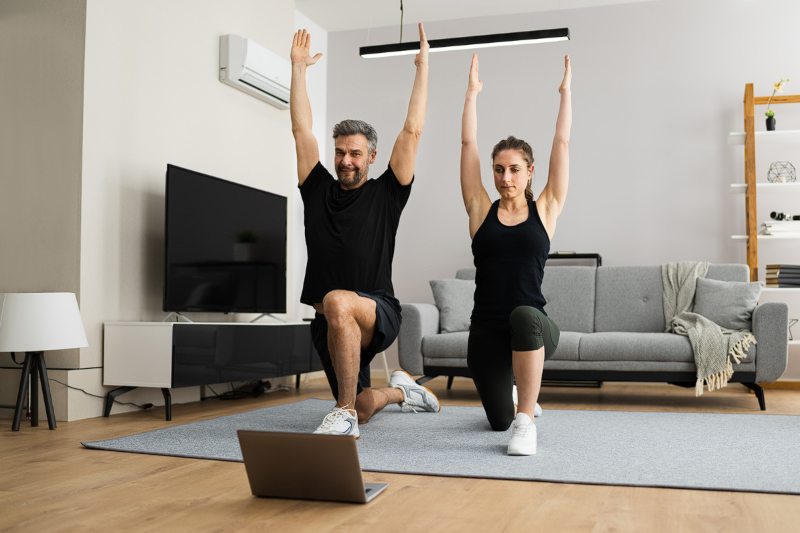
Upper Body Exercises
Push-Ups
Push-ups are a cornerstone of upper body strength training, engaging the chest, shoulders, and triceps while also activating the core muscles for stability. Despite their simplicity, push-ups are incredibly effective and versatile. To perform a standard push-up, begin in a plank position with your hands placed slightly wider than shoulder-width apart. Your body needs to form a straight line from your head down to your heels.
Lower your body by bending your elbows, keeping them close to your body, until your chest nearly touches the floor. Use the strength in your hands to push your body up to the starting position. This movement not only strengthens your upper body but also improves your core stability.
For beginners, push-ups can be modified to make them more accessible. Knee push-ups are a great alternative if you find the standard version too challenging. In this variation, you perform the push-up with your knees resting on the ground, reducing the amount of body weight you have to lift. Another option is incline push-ups, where you place your hands on a raised surface like a chair or a sturdy table.
This reduces the strain on your arms and shoulders while still providing a good workout. As you build strength and confidence, you can gradually transition to the standard push-up and eventually explore more advanced variations like decline push-ups or diamond push-ups. [Full Body Workout at Home Without Equipment for Beginners]
Plank
The plank is one of the most effective exercises for building core strength and stability. It engages multiple muscle groups, including the abdominals, back, shoulders, and even the glutes. To do a plank, begin by lying flat on your stomach on the floor. Prop yourself up on your forearms and toes, keeping your body in a straight line from head to heels.
Your elbows should be directly beneath your shoulders, and your core should be engaged to prevent your hips from sagging or lifting too high. Hold this position for as long as possible, aiming to increase your hold time as you build strength.
There are several variations of the plank that you can try as you become more comfortable with the basic position. For example, side planks focus on the oblique muscles, which run along the sides of your abdomen. To perform a side plank, rotate your body so that you’re balancing on one forearm and the side of one foot, keeping your body in a straight line.
Another variation is the plank with shoulder taps, where you alternate lifting each hand to touch the opposite shoulder while maintaining the plank position. These variations add an extra challenge to the exercise, further enhancing your core stability and strength. [Full Body Workout at Home Without Equipment for Beginners]
Tricep Dips
Tricep dips are a great way to focus on the muscles at the back of your upper arms, specifically the triceps. These muscles are often underdeveloped compared to the biceps, so incorporating tricep dips into your routine can help create balanced upper body strength. To perform a tricep dip, sit on the edge of a sturdy chair or bench with your hands gripping the edge beside your hips.
Slide your hips off the edge so that your body is supported by your arms. Lower your body by bending your elbows, keeping them close to your sides, until they form a 90-degree angle. Engage your triceps to lift yourself back to the starting position.
You can adjust this exercise to match various fitness levels. For beginners, keeping your feet close to the chair or bench will make the exercise easier by reducing the amount of body weight you’re lifting. As you gain strength, you can extend your legs further out to increase the difficulty.
Tricep dips not only strengthen your arms but also engage your shoulders and chest, making them a valuable addition to any upper body workout. Consistent practice of tricep dips will lead to improved arm definition and upper body strength. [Full Body Workout at Home Without Equipment for Beginners]
Lower Body Exercises
Squats
Squats are one of the most fundamental exercises for building lower body strength, targeting the quadriceps, hamstrings, glutes, and calves. They are a functional movement, meaning they mimic the natural motion of sitting down and standing up, which is an essential activity in daily life. To execute a squat, position your feet shoulder-width apart and point your toes slightly outward.
Begin the movement by pushing your hips back as if you’re about to sit in a chair, while keeping your chest up and your weight on your heels. Bend your knees to lower your body until your thighs are parallel to the floor, then push through your heels to rise back to the starting position.
For beginners, it’s important to focus on form rather than depth. Start with shallow squats, only lowering yourself as far as you can while maintaining good form. As your strength and flexibility improve, you can gradually increase the depth of your squat. There are also various squat variations that you can incorporate into your routine as you progress.
For instance, sumo squats involve a wider stance with your toes pointed further outward, which places more emphasis on the inner thighs. Jump squats, on the other hand, add a plyometric element to the exercise, helping to improve explosive power and cardiovascular endurance. [Full Body Workout at Home Without Equipment for Beginners]
Lunges
Lunges are another excellent lower body exercise that works the quadriceps, hamstrings, glutes, and calves while also improving balance and coordination. To perform a basic lunge, stand upright with your feet together. Step forward with one leg, bending your hips until both knees form a 90-degree angle. Ensure your front knee is directly over your ankle, while your back knee hovers just above the ground. Push through your front heel to return to the starting position, then repeat the movement on the other side.
There are several lunge variations that you can incorporate into your workout to target different muscle groups and add variety. Walking lunges involve taking a step forward with each lunge, effectively turning the movement into a dynamic exercise that challenges your balance and coordination even more. Reverse lunges, where you step backward instead of forward, place a greater emphasis on the glutes and hamstrings.
For an added challenge, try jumping lunges, which involve a plyometric movement to switch legs in mid-air, increasing the intensity of the exercise and providing a cardiovascular workout as well. Regardless of the variation you choose, lunges are a versatile and effective way to strengthen your lower body and improve overall functional fitness. [Full Body Workout at Home Without Equipment for Beginners]
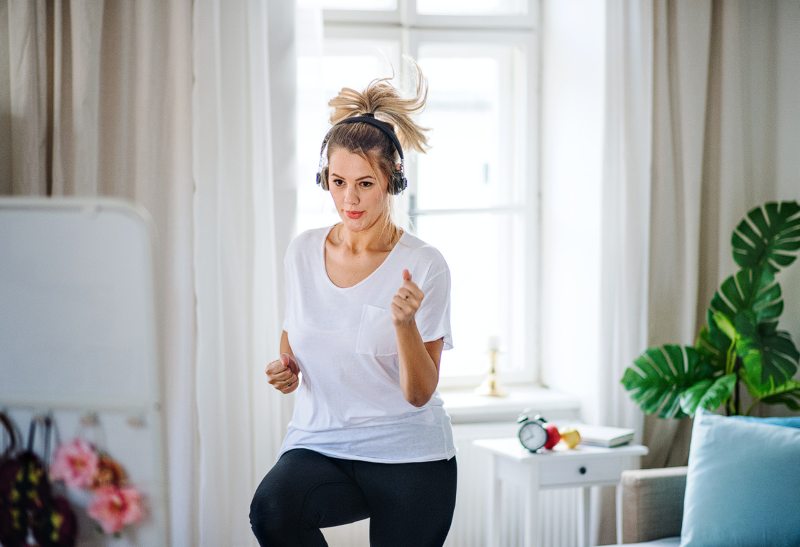
Glute Bridges
Glute bridges are a powerful exercise for targeting the glutes, hamstrings, and lower back. They are particularly beneficial for improving core stability and strengthening the posterior chain, which includes all the muscles along the back of your body. To do a glute bridge, lie on your back with your knees bent and feet flat on the floor, hip-width apart.
Rest your arms at your sides with your palms facing towards the floor. Tighten your core and squeeze your glutes as you lift your hips off the ground, forming a straight line from your shoulders to your knees. Hold the position for a few seconds before slowly lowering your hips back to the ground.
This exercise can be modified or intensified in several ways. For beginners, focusing on the basic form and ensuring proper activation of the glutes is key. As you become more comfortable, you can increase the difficulty by performing single-leg glute bridges, where one leg is extended straight while the other leg performs the lift.
This variation challenges your balance and increases the workload on the glutes and hamstrings of the working leg. Glute bridges not only enhance lower body strength but also help alleviate lower back pain and improve posture by strengthening the muscles that support the spine. [Full Body Workout at Home Without Equipment for Beginners]
Calf Raises
Calf raises are a simple yet effective exercise for strengthening the calves, which play a crucial role in walking, running, and jumping. To perform a calf raise, stand with your feet hip-width apart, and slowly rise onto the balls of your feet, lifting your heels as high as possible. Hold the top position for a brief moment, feeling the contraction in your calves, before slowly lowering your heels back to the ground. This exercise can be done anywhere, and no equipment is needed, making it a convenient addition to your lower body workout routine.
To increase the intensity, you can perform calf raises on a step or elevated surface, allowing for a greater range of motion. Another option is to perform single-leg calf raises, which target each calf individually and help correct any muscle imbalances.
Calf raises are important not only for building muscle definition but also for improving ankle stability and reducing the risk of injury during physical activities. Regularly incorporating calf raises into your routine will contribute to stronger, more resilient lower legs. [Full Body Workout at Home Without Equipment for Beginners]
Core Exercises
Mountain Climbers
Mountain climbers are a dynamic core exercise that also provides a cardiovascular challenge. They engage multiple muscle groups, including the abdominals, obliques, shoulders, and legs, making them an effective full-body workout. To do mountain climbers, begin in a plank position with your hands aligned under your shoulders and your body forming a straight line.
Quickly alternate bringing one knee towards your chest while keeping the other leg extended, mimicking a running motion. Continue this movement at a steady pace, keeping your core engaged and your back flat throughout the exercise.
This exercise can be adapted to accommodate various fitness levels. Beginners can start by performing mountain climbers at a slower pace, focusing on maintaining proper form and stability. As you build strength and endurance, you can increase the speed to make the exercise more challenging and elevate your heart rate. Mountain climbers are an excellent way to improve core strength, enhance cardiovascular fitness, and burn calories, making them a valuable addition to any workout routine. [Full Body Workout at Home Without Equipment for Beginners]
Russian Twists
Russian twists are a fantastic exercise for targeting the obliques, the muscles on the sides of your abdomen, while also engaging the entire core. To perform Russian twists, sit on the floor with your knees bent and your feet flat. Lean back slightly while maintaining a straight back, forming a V-shape with your torso and thighs.
Hold your hands together in front of your chest, and twist your torso to one side, bringing your hands towards the floor beside your hip. Return to the center and repeat on the other side, alternating back and forth.
For an added challenge, you can perform Russian twists with your feet lifted off the ground, which increases the demand on your core muscles to maintain balance. Holding a weight or household object, such as a water bottle, can also intensify the exercise by adding resistance.
Russian twists are particularly effective for improving rotational strength, which is important for various daily activities and sports. Regularly incorporating this exercise into your routine will help you build a stronger, more defined core. [Full Body Workout at Home Without Equipment for Beginners]
Bicycle Crunches
Bicycle crunches are one of the most effective exercises for targeting the entire core, including the upper and lower abs, obliques, and hip flexors. To do bicycle crunches, lie on your back with your hands behind your head and your legs lifted, knees bent at 90 degrees. Start by bringing your right elbow towards your left knee while extending your right leg straight out. Then, switch sides, bringing your left elbow towards your right knee while extending your left leg. Continue alternating sides in a pedaling motion, mimicking the movement of riding a bicycle.
The key to effective bicycle crunches is to perform the movement slowly and with control, ensuring that your core is engaged throughout. Avoid pulling on your neck or using momentum to complete the movement. Instead, focus on using your abdominal muscles to drive the motion.
This exercise not only strengthens the core but also improves coordination and flexibility. As you progress, you can increase the number of repetitions or slow down the movement to add intensity. Bicycle crunches are an excellent way to achieve a toned, strong core, making them a staple in any ab workout routine. [Full Body Workout at Home Without Equipment for Beginners]
Cool Down and Stretching
Cooling down after your workout is equally essential as warming up. It helps your body transition back to a resting state, reduces muscle soreness, and enhances flexibility. A proper cool-down involves gradually lowering your heart rate and stretching the muscles you worked during your workout. This process helps remove metabolic waste products, such as lactic acid, from your muscles, which can reduce post-workout stiffness and discomfort.
Start your cool-down with light aerobic activity, such as walking or slow jogging, for about 5-10 minutes to gradually lower your heart rate. Follow this with static stretching, where you hold each stretch for 20-30 seconds. Focus on stretching all major muscle groups, especially those that were heavily used in your workout. For example, stretch your hamstrings, quadriceps, calves, chest, and shoulders. Incorporating deep breathing into your cool-down routine can also help relax your body and mind, promoting recovery and preparing you for your next workout. [Full Body Workout at Home Without Equipment for Beginners]

Safety Tips
Safety should always be a top priority when starting a new workout routine, especially for beginners. It’s important to listen to your body and avoid pushing through pain or discomfort. If an exercise doesn’t feel right or causes pain, stop immediately and reassess your form. Maintaining proper form is vital to avoid injuries and make sure you’re effectively working the targeted muscle groups. If you’re unsure about your form, consider practicing in front of a mirror or recording yourself to identify areas for improvement.
Staying hydrated is another key aspect of workout safety. Water is essential for regulating body temperature, lubricating joints, and transporting nutrients to keep your muscles energized. Aim to drink water before, during, and after your workout to stay properly hydrated. Additionally, maintaining a balanced diet rich in nutrients will support your fitness goals by providing your body with the fuel it needs to perform and recover.
If you have any pre-existing conditions or injuries, it’s advisable to consult with a healthcare professional before starting a new exercise routine. They can provide guidance on exercises that are safe and beneficial for your specific needs.[Full Body Workout at Home Without Equipment for Beginners]
Conclusion
A full-body workout at home without equipment is a highly effective and accessible way to improve your fitness, particularly for beginners. It offers the convenience of exercising at your own pace, in your own space, without the need for expensive gym memberships or specialized equipment. By incorporating a variety of exercises that target different muscle groups, you can build strength, enhance endurance, and improve overall fitness.
The key to success is consistency, proper form, and a focus on gradual progress. Whether your goal is to lose weight, build muscle, or simply stay active, starting a full-body workout routine at home is a great way to achieve a healthier, more active lifestyle. So, don’t wait—take the first step today and start reaping the benefits of regular exercise. [Full Body Workout at Home Without Equipment for Beginners]
FAQs
Q1. How often should beginners do a full-body workout?
Beginners should aim to perform a full-body workout 3-4 times a week. This frequency allows for sufficient recovery time between sessions, which is crucial for muscle growth and overall progress.
Q2. Can I build muscle without equipment?
Absolutely! Bodyweight exercises such as push-ups, squats, and planks are highly effective for muscle building. These exercises use your own body weight as resistance, which can be just as challenging as lifting weights when performed with proper form and intensity.
Q3. What if I can’t fit in a full workout?
Even short workouts can be highly effective, especially if you focus on high-intensity exercises that target multiple muscle groups. A 15-20 minute workout can still provide significant benefits, particularly if you incorporate compound movements like squats, lunges, and push-ups.
Q4. How long should each workout session last?
The duration of a full-body workout can vary depending on your fitness level and the intensity of the exercises. Typically, a session should last between 30 to 60 minutes. Beginners can start with shorter sessions and gradually extend the duration as they build strength and endurance.
Q5. Is warming up and cooling down really necessary?
Yes, warming up before and cooling down after your workout are essential steps to prevent injuries and enhance performance. A proper warm-up prepares your muscles and joints for exercise, while a cool-down helps your body recover and reduces muscle soreness.

